Adjusting Pressure
Big drops in air pressure are even more serious. Pilots and passengers of highflying aircraft need protection from the low air pressure outside of the plane. Early airliners did not fy higher than about 10,000 feet (3,050 meters)-above that height, some passengers began to feel faint. To fy higher safely, an aircraft has to be pressurized. Extra air is pumped inside a modern airliner to raise the pressure. The air inside a pressurized airliner is not at sea level pressure. It is the same as the pressure at an altitude of about 8,000 feet (2,500 meters), which is about 11 psi, or 75.8 kilopascals.
Fighter pilots sit in a pressurized cockpit, but they also wear an oxygen mask in case the canopy shatters and the cockpit loses pressure.
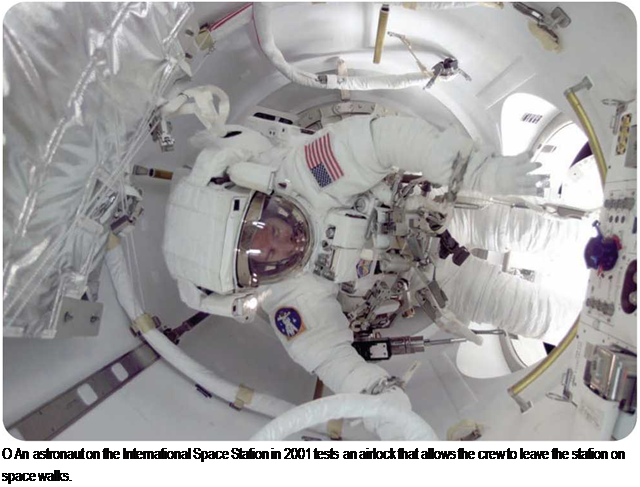 |
If an airliner suffers a sudden loss of pressure at its cruising altitude of about
35,0 feet (10,600 meters), oxygen masks drop down automatically from the ceiling. The crew and passengers have about 30 seconds to put them on before losing consciousness.
The Space Shuttle and International Space Station (ISS) are both pressurized to sea level pressure. The spacesuits worn by astronauts, however, are pressurized to only 4.3 psi (about 30 kilopas – cals) to prevent them from blowing up like a balloon. If an astronaut breathed air at such a low pressure, there would not be enough oxygen, so the suit is supplied with pure oxygen.
Because the pressure in a spacesuit is much lower than the pressure inside the spacecraft, the air pressure around astronauts preparing to leave their spacecraft is lowered in stages so that they can adjust safely. The day before a spacewalk, the air pressure inside the Space Shuttle is lowered to 10.2 psi (70 kilopascals). Space Station astronauts spend several hours inside an airlock where the air pressure is even lower, to prepare for the lower pressure inside their spacesuits.
HIGH RISKS
Early balloonists were the first aviators to discover the hazards of high – altitude flight. On September 5, 1862, Henry Coxwell and James Glaisher made a balloon ascent to more than 30,000 feet (9,100 meters). No manned balloon had flown as high before. As they passed
29,0 feet (8,850 meters), Glaisher became paralyzed. Then he lost consciousness. Coxwell lost the use of his arms and had to use his teeth to pull the rope that released hydrogen from the balloon and let them descend. They both survived.
_____________________________________________ J
Using Pressure
Aircraft and spacecraft can use different kinds of pressure in their operations. When a large liquid-fuel rocket is fired, pumps feed fuel to the engine. Pumps are too big and heavy for small rockets and spacecraft, so they use pressure instead. A high-pressure gas, such as helium, pushes the fuel from its storage tank to the engine.
Aircraft use high-pressure oil in their hydraulic systems. Hydraulic systems are those operated by liquid. Liquids cannot be squashed as much as gases because their molecules are already close together. This causes liquids under pressure to transmit force from one place to another. A digging machine
|
О Mechanics change the engine hydraulics pump on a cargo plane. Cargo planes also use hydraulics to operate their cargo doors and loading ramps. |
works in this way. Oil pumped through flexible hoses operates mechanical pushers called rams, which move the digger’s arm. Modern automobile brakes also work by hydraulic power. An aircraft’s hydraulic system uses oil pressure to move its control surfaces and raise its landing gear. Cargo planes use hydraulic pressure to operate their cargo doors and loading ramps. Rockets use hydraulic power, too, when they swivel their engine nozzles for steering.
SEE ALSO:
• Air and Atmosphere • Altitude
• Astronaut
_____________________________________________ J











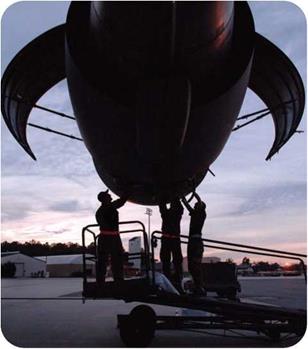
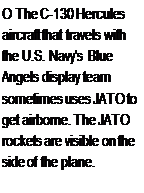
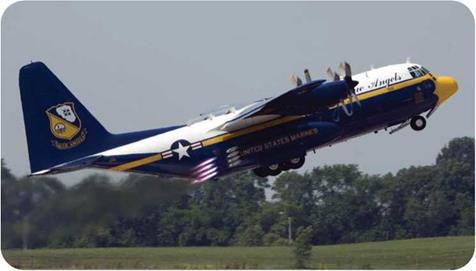




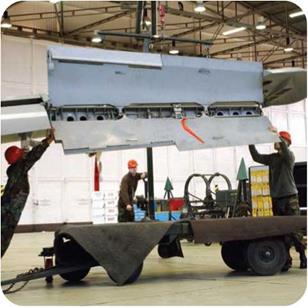


 “That’s one small step for man, one giant leap for mankind.” The astronauts spent two hours on the Moon’s surface, collecting rock samples and setting up scientific equipment. Mission accomplished, they reentered the Eagle.
“That’s one small step for man, one giant leap for mankind.” The astronauts spent two hours on the Moon’s surface, collecting rock samples and setting up scientific equipment. Mission accomplished, they reentered the Eagle.
